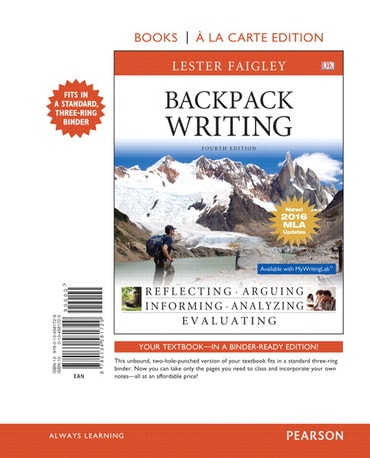Switch content of the page by the Role togglethe content would be changed according to the role

Backpack Writing, MLA Update Edition, 4th edition
Published by Pearson (July 18, 2016) © 2017
- Lester Faigley University of Texas at Austin
$69.32
Price Reduced From: $86.65
Need help? Get in touch